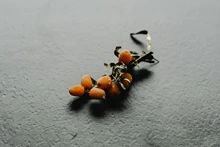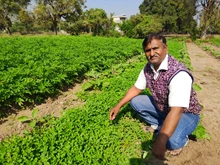
Watermelon, with its juicy sweetness and refreshing taste, is a summer staple enjoyed by many. However, amidst its allure lies the risk of adulteration and artificial ripening, making it imperative to discern a good watermelon from a potentially harmful one. In this article, we delve into the various adulterants and chemicals used in watermelon, along with practical methods to detect adulteration and ensure safe consumption.
Understanding Adulterants and Chemicals
Adulterants:
-
Forchlorfenuron: This growth accelerator promotes rapid cell division and delays cell death, artificially increasing the size of watermelons.
-
Erythrosine-B / Red-B: Injected to impart a bright red color to watermelons, this dye enhances visual appeal.
Chemicals for Artificial Ripening:
-
Oxytocin: Often used for quick ripening, this chemical poses health risks including stomach ache and potential nervous system effects.
-
Calcium Carbide: Releases Ethylene to hasten ripening, yet poses severe health hazards ranging from headaches to cancer.
Detecting Adulteration
-
Lack of Taste: Enhanced cell division compromises flavor, resulting in a lack of natural sweetness.
-
Water Test: A change in water color upon placing a watermelon slice suggests the presence of red color agents.
-
Time Delay Test: Premature decay may manifest within days, evident by the fruit oozing a foul-smelling fluid.
Best Practices While Shopping
-
Pale Yellow Patch: Indicates vine-ripened watermelon, enhancing flavor and quality.
-
Web-like Spots: Signify natural pollination by bees, indicative of genuine produce.
-
Tail Examination: A dry, dark-colored tail suggests natural ripening while a green stalk may indicate adulteration.
-
Inspection for Marks: Check for injection or puncture marks, indicative of tampering.
-
Offseason Caution: Avoid purchasing watermelons during the offseason to reduce the risk of adulteration.
Safeguarding against adulteration in watermelon is essential for ensuring safe consumption. By familiarizing themselves with common adulterants, employing practical detection methods, and adhering to best shopping practices, consumers can enjoy the sweet taste of watermelon with confidence, knowing they have chosen a genuine, untainted fruit.










